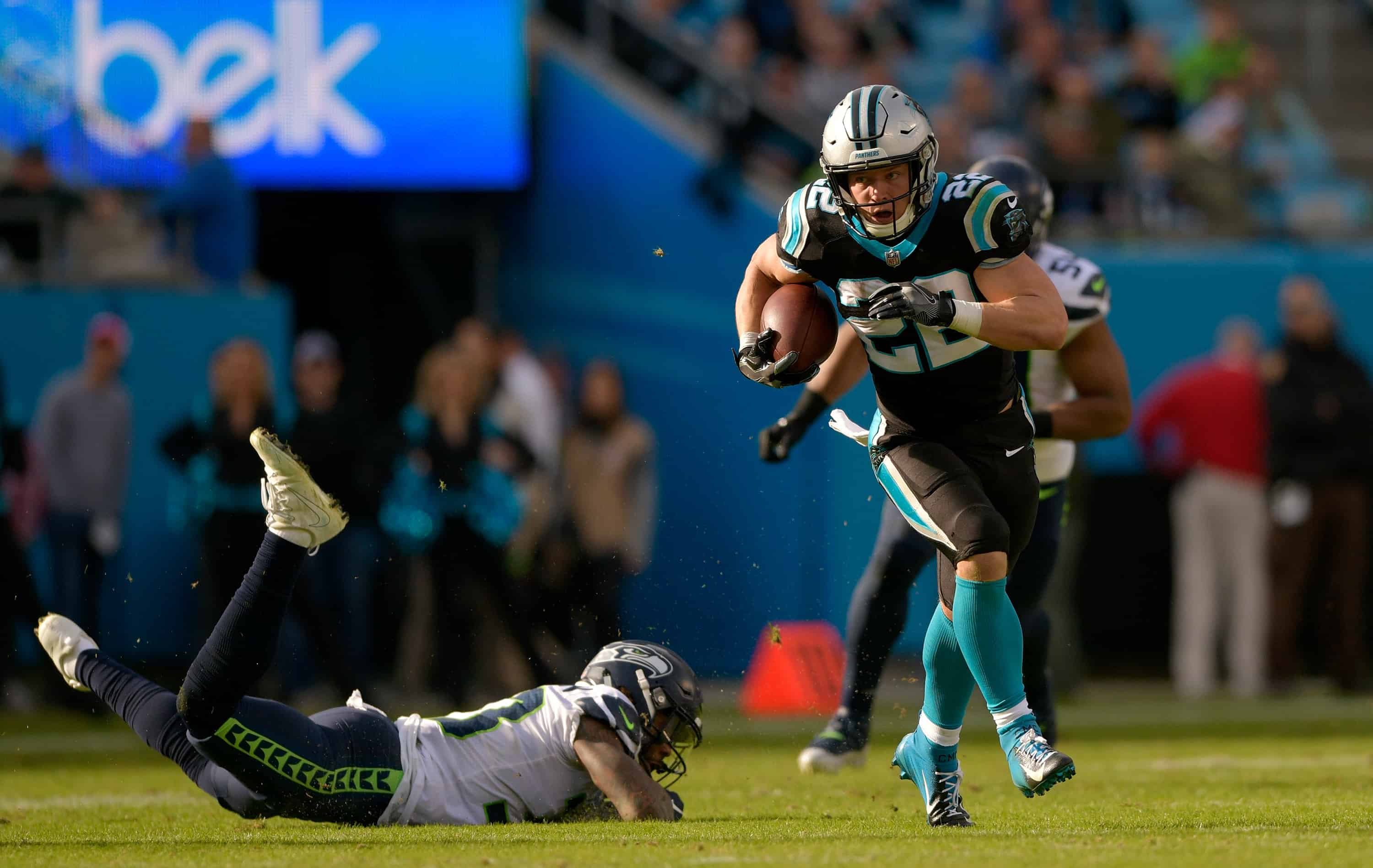Running backs are getting used in the passing game more than ever before. Last season, Christian McCaffery ranked ninth in the league with 107 receptions, just the fourth 100-reception season for a running back in league history. McCaffery was followed by Saquon Barkley, James White, and Alvin Kamara, who each had at least 80 receptions. Even Ezekiel Elliott almost hit that mark with 77.
While there are still some inefficiencies in running back targets, especially compared to those of wide receivers and tight ends, NFL teams are starting to get smarter about how to use these backs in the passing game. No longer are running backs strictly check down options, though that can still represent an overwhelming amount of targets (looking at you, New York Giants). More often, we’re seeing running backs run actual routes out of the backfield, out wide, or from the slot.
But there is still one place running backs have yet to be unleashed: the seam.
Last year there were only 10 targets to running backs on seam routes, per Sports Info Solutions charting. 10 on 3,440 overall targets to running backs. That’s not even a tenth of a percent. Getting a running back down the seam takes advantage of the defense on multiple levels. It can get the back matched up on a linebacker down the field and it takes advantage of throws to the middle of the field, which have proven to be more valuable. Last season, passes to the middle of the field were worth 0.19 Expected Points Added per attempt with a positive play rate of 55 percent while throws to the outside were worth 0.15 EPA per attempt with a positive play rate of 48.5 percent.
On those 10 targets, teams averaged 0.38 EPA per attempt with a positive play rate of 50 percent. Over all 3,440 running back targets in 2018, the average EPA per attempt was 0.06 with a positive play rate of 48.5 percent. Running back seam routes were equally as efficient than targeting tight ends on the route (0.34 EPA per attempt on 188 targets) with a slightly lower positive play rate (53.2 percent). The running back seam almost matched the almighty wheel route (0.43 EPA per attempt and 50 percent positive play rate).
So yes, we are only talking about 10 targets. But why are we talking about only 10 targets? Take a look at how some of these seam routes worked and there are multiple ways teams can take advantage of the route.
There’s using the individual ability of the running back as the main factor like the Carolina Panthers did with McCaffery against the Seattle Seahawks. McCaffery ran the seam up to safety Bradley McDougald (30) and juked the defender out of position. He then made another defender miss after the catch.
What should make the running back seam so appealing is it’s not really a route that takes a lot of route running savvy. Mostly, it’s running down the field in a straight line, something every running back should have the ability to do. Even as impressive as the McCaffery route looked, it’s something we’ve seen a number of running backs do with the ball in their hands. Translating that to a route would be much easier than asking the back to run something more advanced.
Of course, there’s also the option of scheming it wide open so all the back has to do it catch the ball. That’s what the Kansas City Chiefs did with Spencer Ware last season. The Chefs used a fake end-around motion with Tyreek Hill to draw defenders to the line, which allowed Ware a free path down the field.
This play was reminiscent of what the Chiefs ran against the Patriots on the opening night of the 2017 regular season with a jet sweep motion that allowed Kareem Hunt to run wide open down the field. It was a play the Los Angeles Rams also used with Todd Gurley that season and was later stolen by a number of other offenses.
The running back seam can also be used as an effective weapon in the red zone. The Rams used in their Week 4 decimation of Anthony Barr and the Minnesota Vikings. Gurley ran the route out of the backfield from the 8-yard line. He widened the start to get Barr moving horizontally then just had to run past the overmatched linebacker into the end zone. This route worked like a condensed wheel.
Then there was the New England Patriots, adding in more things we love, like using heavy personnel to create mismatches in the passing game. This came from a Week 17 game against the New York Jets. New England came out with two running backs, Rex Burkhead and fullback James Develin. Develin was the only one lined up in the backfield and Burkhead was in the middle of the trips side of a 3×1 set. The alignment confused the Jets’ defense, who eventually put a linebacker on the back. All Burkhead had to do was get behind the linebacker, which happened almost instantly.
These were four repeatable ways to get a running back into open space down the seam. We know NFL teams want to throw to running backs, so they should also want to get more efficient and valuable throws to running backs. Right now, the seam route is an incredibly underused aspect of those passes and it’s something every team should explore more. Even the teams we pointed out in this post need to use it more — only the Rams targeted the route twice last season.
The NFL is at a point where running backs are more athletic and more productive in the passing game than ever. Taking those skills and putting them in more places to have a positive impact on the field should be atop teams’ priority lists to get better use out of the position going forward.
















